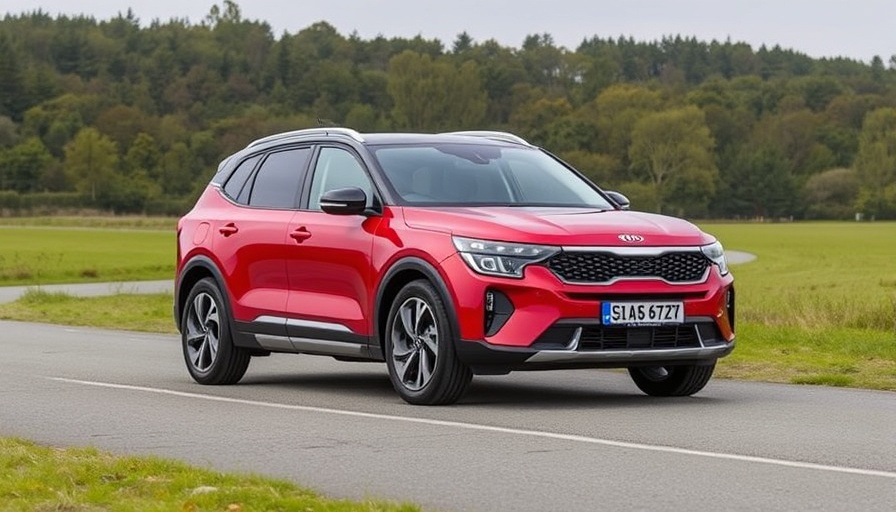
Understanding the Kia EV6: A Green Revolution
The automotive world continues its rapid shift towards electric vehicles (EVs), and the Kia EV6 stands out as a compelling entry in the mid-range market. With its recent facelift, this all-electric SUV not only showcases an improved aesthetic but also boasts impressive specs, echoing the need for sustainable transportation options that appeal to both homeowners and businesses interested in green energy solutions.
Key Specifications and Performance
At the heart of the Kia EV6 is its new 84 kWh battery, allowing it to cover an astonishing range of up to 582 km (approximately 361 miles) on a single charge—well within the average commuting distance for most users. This range is suitable for families planning getaway trips and businesses that require reliable transport for daily use. The improved DC charging capacity of up to 258 kW means that drivers can replenish their batteries from 10 to 80% in just 18 minutes, making the EV6 not only convenient but also practical for those considering EVs as a primary mode of transportation.
The Importance of 800-Volt Technology
The ongoing debate around 800-volt technology remains a hot topic in the EV community. Supporters argue that it’s essential for rapid charging and overall efficiency, while critics label it as over-engineering. For potential buyers, the advantages of faster charging and improved performance must be weighed against potential costs and complexities. This conversation is particularly relevant as more people seek energy-efficient vehicles that harmonize their eco-friendly homes.
Comfort and Driving Experience
Subjectively, one of the most notable enhancements to the new EV6 is its improved comfort. The revamped chassis softens its ride, providing a more pleasurable driving experience, especially on longer trips where comfort is paramount. Enhanced noise insulation also makes for a quieter cabin, allowing passengers to converse without straining to be heard over the road noise. This attribute is particularly appealing for families and businesses that frequently use their vehicles for long trips.
Design Details That Matter
The aesthetic aspects of the EV6’s design—like its distinctive 'Snow White Pearl' paint—reflect not just innovation but also the consideration of a sustainable lifestyle. Yet, practicality shouldn’t be overlooked; lighter paint may show dirt more readily, presenting a challenge for those engaged in outdoor adventures or those who live in areas with adverse weather.
Future of Electric Mobility and Solar Integration
Looking toward the future, the incorporation of solar technology into EVs like the Kia EV6 presents exciting prospects for homeowners interested in achieving grid independence. For instance, deploying solar-powered home charging stations can vastly improve the attractiveness of owning an EV, as the energy harvested from solar panels can be used not only to power homes but also to provide a more sustainable means of charging electric vehicles. As the demand for green energy solutions continues to rise, manufacturers are expected to explore ways to integrate solar technology into their offerings.
Practical Considerations for EV Owners
For readers contemplating the transition to electric vehicles, several aspects warrant attention. Ensuring access to EV charging stations, understanding local incentives for EV buyers, and exploring how solar energy can play a role in this transition are all critical steps. Furthermore, evaluating the total cost of ownership, including maintenance, insurance, and potential solar savings, may present a more comprehensive understanding of what it means to own an EV like the Kia EV6.
The Kia EV6 not only exemplifies the future of motor vehicles but also serves as a reminder of the growing intersection between automotive technology and renewable energy. With rising options for sustainability, it’s about time to consider how our driving habits can support a greener future.
Embarking on the journey to an electric vehicle is not just a personal choice but contributes to the collective effort of sustainability. If you are interested in solar solutions for your home and expanding the potentials of your electric vehicle, explore options available in your area or consult with solar professionals about integrating energy-efficient solutions into your life.
 Add Row
Add Row  Add
Add 



Write A Comment